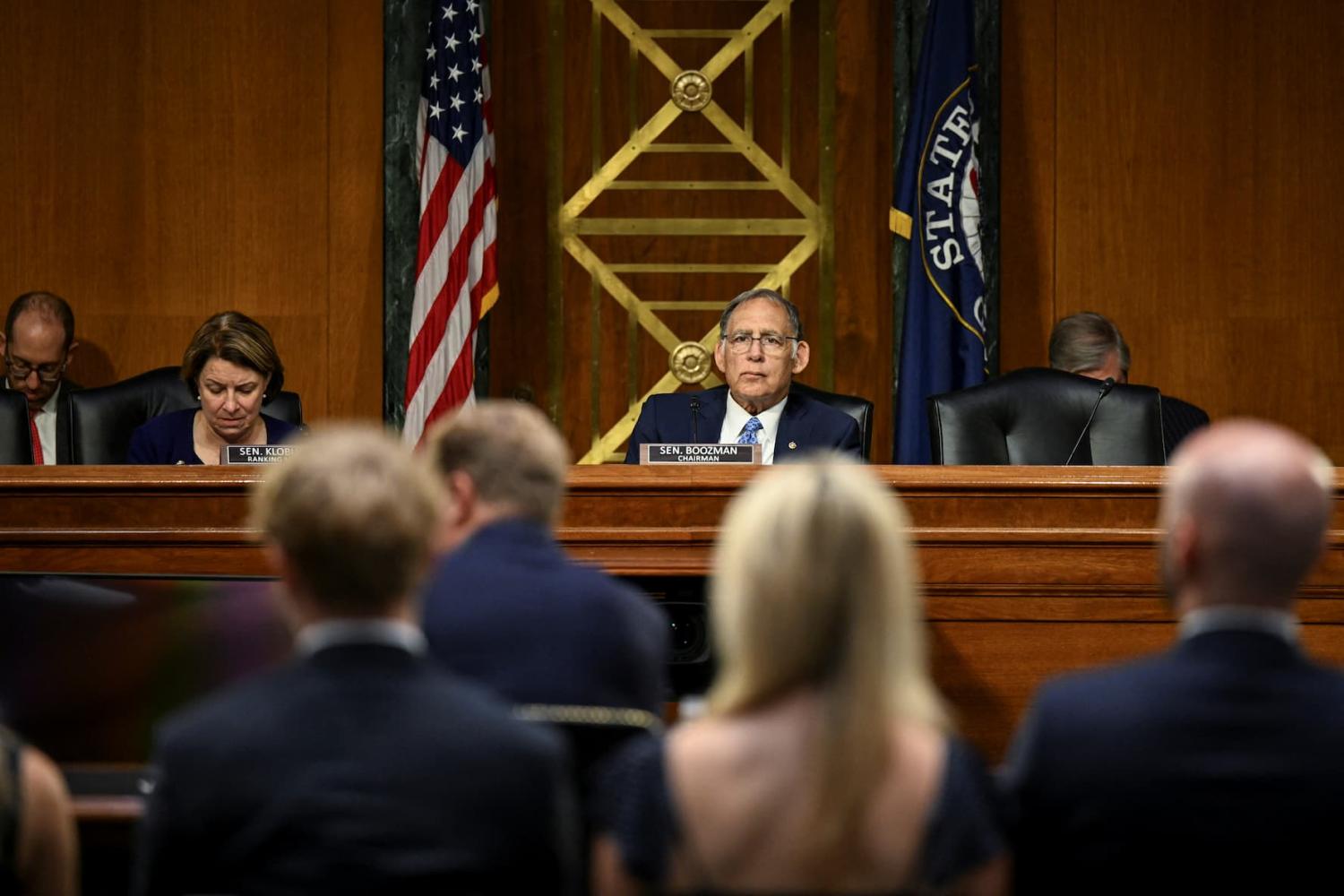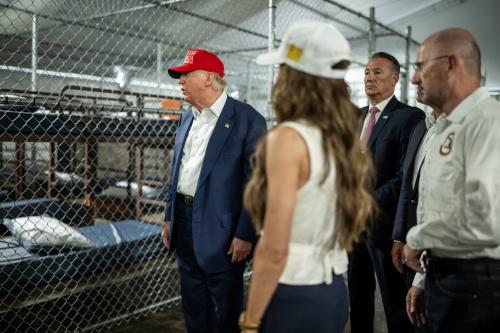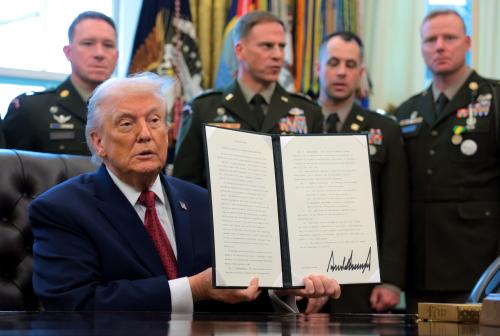Special thanks to Anaya Bhatt and Adelle Patten for expert research assistance.
This article continues our examination of two aspects of President Trump’s effort to remake the government to help him achieve his policy goals: the pace of Senate confirmations of his executive branch nominees and the gender, race, and ethnicity of his confirmed nominees.
Newly inaugurated presidents are eager to staff the executive branch and begin to steer the ship of state toward their policy goals. After 200 days, the Senate had confirmed 98 nominees—45 in the first 100 days and 53 in the second—a small share of about 700 positions across 15 major departments. The share of women and nonwhites among the 98 mirrored earlier trends, with fewer women and nonwhites filling the most senior government roles.
I examine confirmed nominees for the 15 cabinet departments in the line of presidential succession and compare the results to Trump’s predecessors, going back to President George W. Bush in 2001. I relied on congress.gov for data on confirmations and conducted additional online research to identify relevant demographic characteristics. For additional information about methodology, please see our confirmation tracker.
Pace
Unlike the haphazard approach to nominations in Trump’s first term, the administration has so far provided the Senate with plenty of nominees. The Senate’s pace of confirmations tells a different story, as the chart below shows—98 confirmations after 200 days in Trump’s second term, compared with 89 at the same point in his first. Part of this uptick occurred after Senate Majority Leader John Thune (R-S.D.) delayed the Senate’s recess for one day in order to confirm six nominees on Saturday, August 2, 2025. Regardless of the improvement in term two, the Trump administration’s confirmation record lags well behind the record of confirmations during the early days of the Bush and Obama administrations.
Gender
In the second 100 days of Trump’s second term, the Senate confirmed five female nominees, bringing the share of women among his total confirmed nominees to 12%—still the lowest of the prior four administrations by a substantial margin. The percentage of women among Trump’s confirmed nominees is roughly half that of Bush, Obama, and Trump’s first term, and much lower than Biden’s.
Race
Of the 53 nominees confirmed between days 101 and 200, 51 were white, resulting in a 91% white male share — the highest among the five most recent presidencies, edging out Trump’s first term by one point. This stands in sharp contrast to Biden’s record and far exceeds that of the only other Republican in the data set, George W. Bush.
Ethnicity
Trump’s confirmed nominees continue to be the least ethnically diverse going back 25 years, using U.S. Census categories. While the percentages are quite similar to Trump’s first term, they contrast sharply with the make-up of those confirmed in the first two hundred days of the Bush, Obama, and Biden administrations.
The bigger picture
Two hundred days in, the pace of confirmations has increased (compared to the first Trump term) but remains relatively slow, and the proportion of white males remains comparatively very high.
One explanation for the slow pace is the heavy dose of procedural hurdles the opposition has used. According to political scientist Chris Piper, “In the first 200 days . . . only seven nominees were confirmed without cloture being invoked, and every nominee has required a final recorded vote.” While Piper shows that the use of these procedural hurdles is at an all-time high, Democrats are quick to claim that they are entitled to thoroughly review the files of these senior-level appointees. Historically, both parties have used obstructive practices to delay confirmations. Today’s dysfunction may be especially intense.
To overcome this resistance, a recent New York Times article revealed the possibility that frustrated Republicans might “go nuclear,” making unilateral changes to the Senate that expedite the confirmation process. If successful, the rate of confirmation could see a real bump in the next 100 days.
The Brookings Institution is committed to quality, independence, and impact.
We are supported by a diverse array of funders. In line with our values and policies, each Brookings publication represents the sole views of its author(s).








